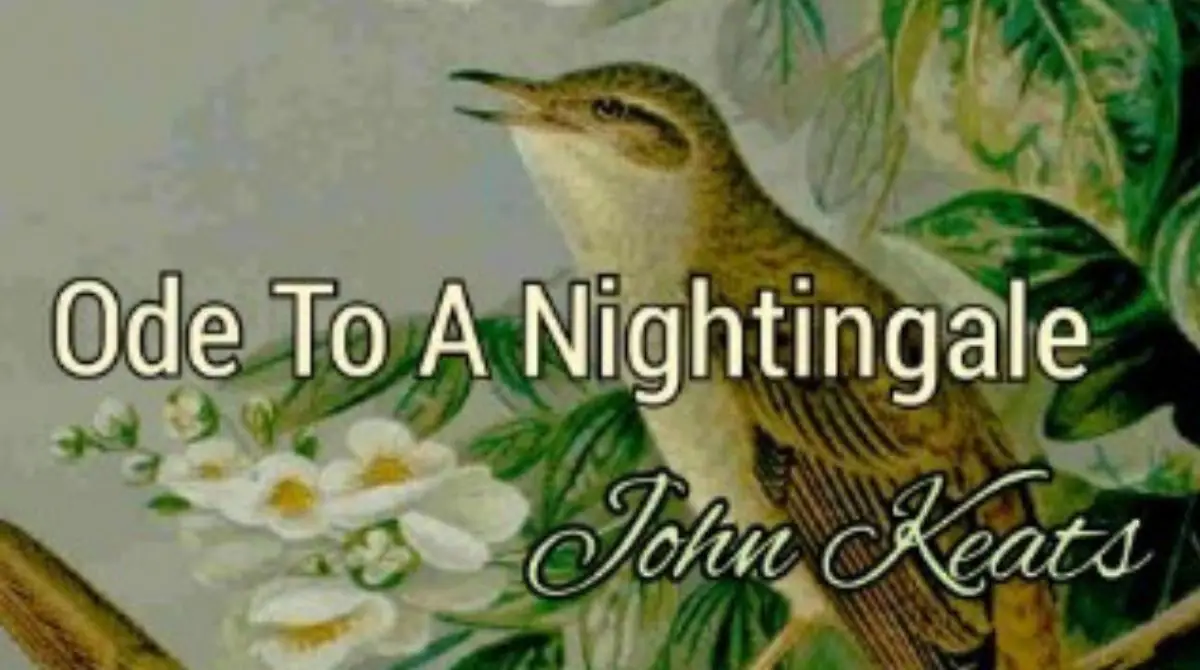Ode to a Nightingale Analysis
Keats’ ode to a Nightingale is one of the master pieces of poetic art of all ages. The poem is remarkable for many excellent poetic qualities
Analysis of Ode to a Nightingale by John Keats with many features
Different moods of the poem Ode to a Nightingale
One of the beauties of the poem lies in its exquisite sequence of poetic moods. The different moods of the poet are nicely constructed in the poem. The poet starts with the mood of despondency. Then his imagination soars high on the viewless wings of Posey and he speaks refuge in the world of beauty where from the Nightingale sings.
He thinks it high to die while the Nightingale pours its sweet melody in such an ecstasy. Then suddenly comes the mood of disillusionment as the Nightingale flies away and the poet comes back to the stern reality to feel and suffer again the pangs of life. Thus, the different moods of the poet are aptly presented or constructed in the poem.
Quality of Romanticism in Ode to a Nightingale
Another charm of the poem lies in the beautiful expression it gives to the spirit of old romance. He thinks of “Flora” and the “country dance” and the “provencal song” as he thinks of the countries producing wine. The sweet song of the Nightingale reminds the poet of Ruth standing with tears amid the alien corn. It also reminds of the “charmed magic casements”.
Here we see Keats’ lofty imagination, fervent emotion and sharpened sensibility which are exquisitely appeal to romanticism in the poem. The poem also illustrates the rich sensuousness of Keats. He will taste rich wine, his mouth will be purple stained, his sense will be regaled with the sweet scent of the flowers of the trees.
The poem is also remarkable for its excellent pictorial quality. The tender night with Queen Moon on her throne surrounded by her starry fays is nicely described. The flowery grove (in which the Nightingale sings) consists of white hawthorn, pastoral eglantine, fast fading violets, musk-rose and other flowers flash before our mind’s eye just like picture. Such pictorial quality, later on, we also notice in Tennyson.
Hellenism in the poem Ode to a Nightingale:
Keats’ Hellenism is also evident from the poem. The myths and images of classical literature are scattered through out the poem – swallowing dull opiate to the drain one sinks in Lethe. The Nightingale is the “light-winged Dryad of the trees”.
Keats would go to it not being charioted by Bacchus and his pards, but on the viewless wings of poesy. Because of Keats’ profound love of Hellenism, Shelley observes, “Keats is three-fourth Greek”.
The poem is marked by Keats’ intense passion for beauty. It is the life of beauty that Keats romantically longs for in the poem. The Nightingale’s world of sweet song is a world of beauty to Keats.
Traits of Human Life:
The poem reels in human element. The poet is no longer a mere worshipper of abstract beauty but he gives fitting expression of the sorrows and sufferings of human life. For instance, he speaks of the weariness, the fever and the fret of human life. “Here where men sit and hear each other groan, where palsy shakes a few, sad, last gray hairs……….”.
Conclusion:
Lastly, the poem is very remarkable for the rounded felicity of phrases, happy coinage of words, excellent compound words, apt images and sweet diction. The thoughts of the poet are spontaneously expressed in the poem with wonderful brevity, clarity and sonorousness.
Compound words, such as – Lethe-wards, Light-winged, deep-delved, purple-strained, spectre-thin, leaden-eyed etc testify the young poet’s classic skill in composition. Because of such unique power of expression Mathew Arnold remarks in the “Preface” to his poems of 1853 where Keats is famously described as “a perfect treasure house”.
You May Like To Read More:
